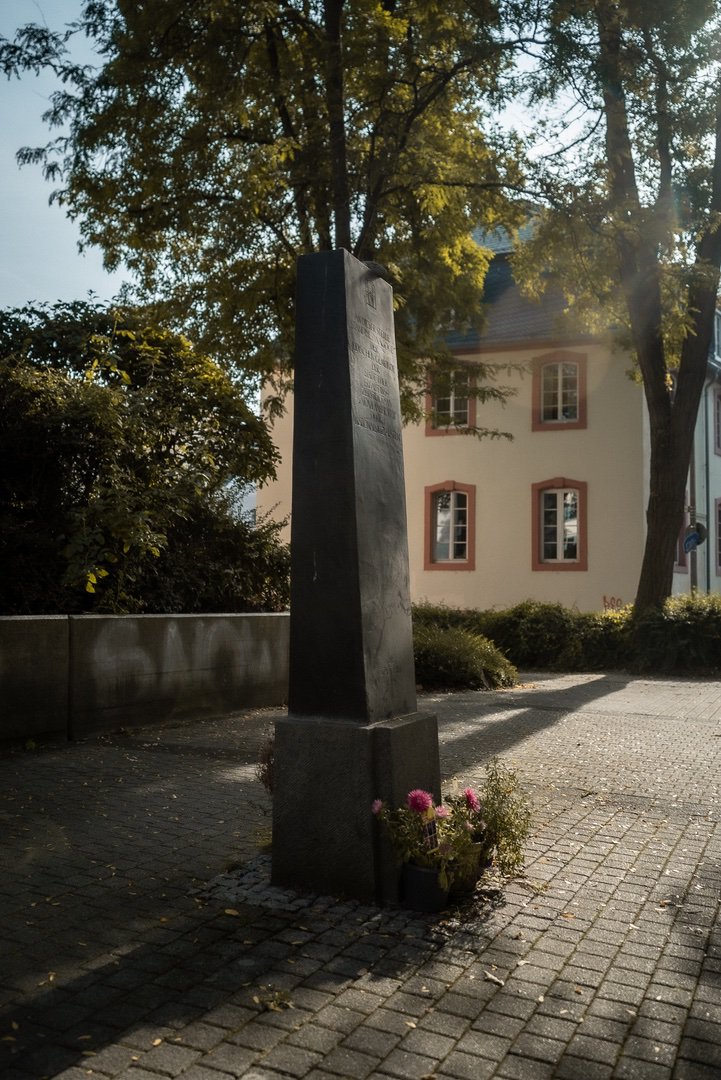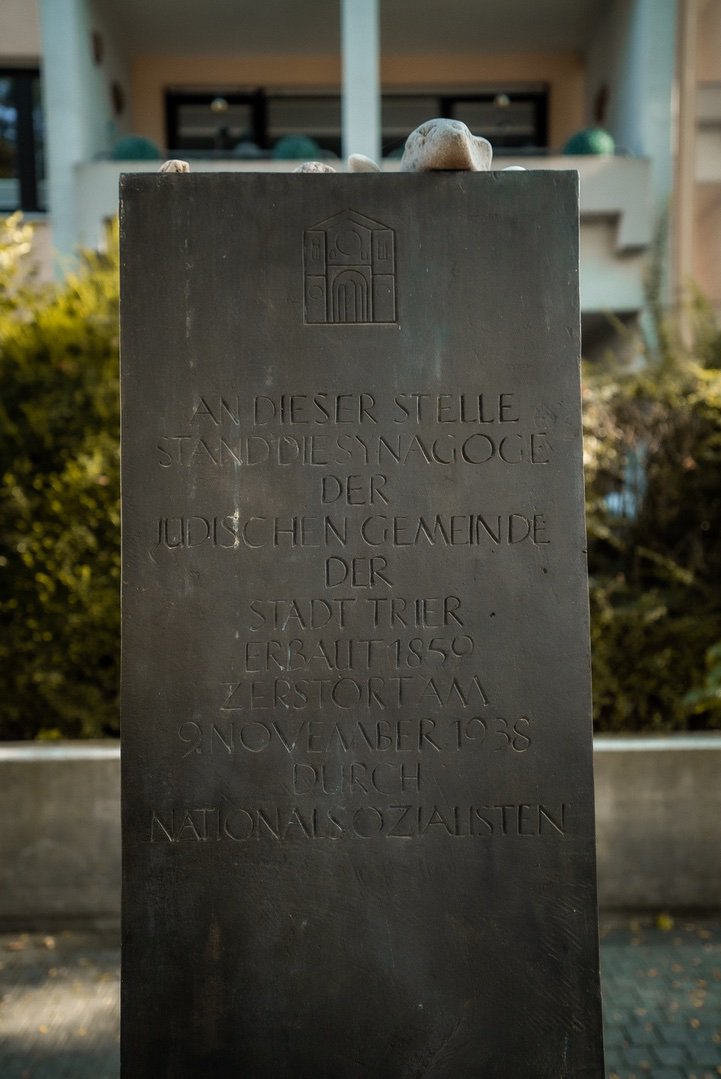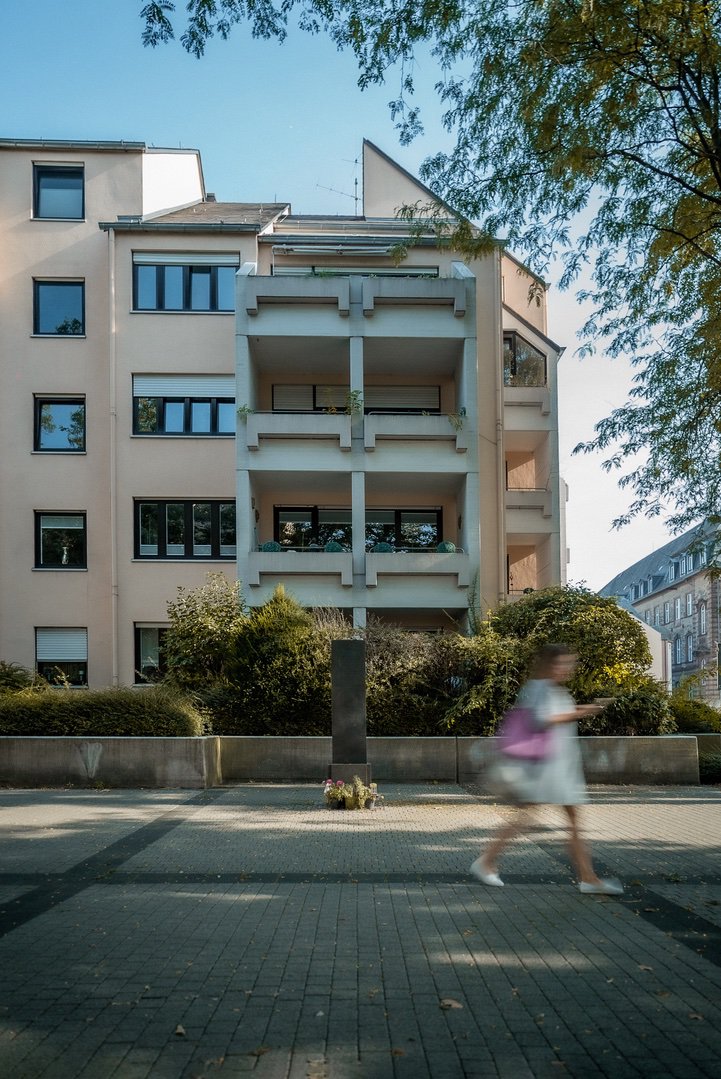Former synagogue
In Zuckerbergstraße, a bronze memorial stele created by Franz Schönberger in 1984 commemorates the former synagogue. Every year, commemorations are held here on the occasion of the Reichspogromnacht.
The synagogue had been built in 1860. At that time, Josef Kahn was the chief rabbi of Trier, whose ambition was to revive as many communities in the area as possible. Religious life lay fallow, there was no synagogue, no staff, and Josef Kahn's great achievement was to have small synagogues built in more than thirty small rural communities in the area. In 1844 there were 380 Jews living in Trier, in 1880 there were 800. Chief Rabbi Josef Kahn was a representative of Reform Judaism, and as such he stood between assimilation and emancipation efforts for the view that Jews should open themselves to the new possibilities and freedoms. Among other things, he advocated that Jews also enter military service, which they had refused to do until then or which was not granted to them. This led to tensions with the Orthodox Jews, who feared too much conformity and did not see themselves as citizens but as a separate group. However, they were only a minority and at times had their own rabbi.
The synagogue on the Zuckerberg was a simple, unplastered building made of sandstone with neo-Romanesque elements, like those still found today from the mid-19th century on some graves in the old Jewish cemetery Weidegasse. This synagogue was looted, burned and destroyed by the National Socialists in a concerted action on the night of 9 November 1938. Subsequently hit by bombing, it remained standing until its demolition in 1958.
The Reich Pogrom Night brought Jewish life in the German Reich, and thus also in Trier, to a standstill. By then, about 300 Jews from Trier had already been able to emigrate, but several hundred were deported to the extermination camps in the East in the following years, most of them murdered at their destinations.
Author: Ralf Kotschka
Editorial staff: Prof. Dr. Frank G. Hirschmann



